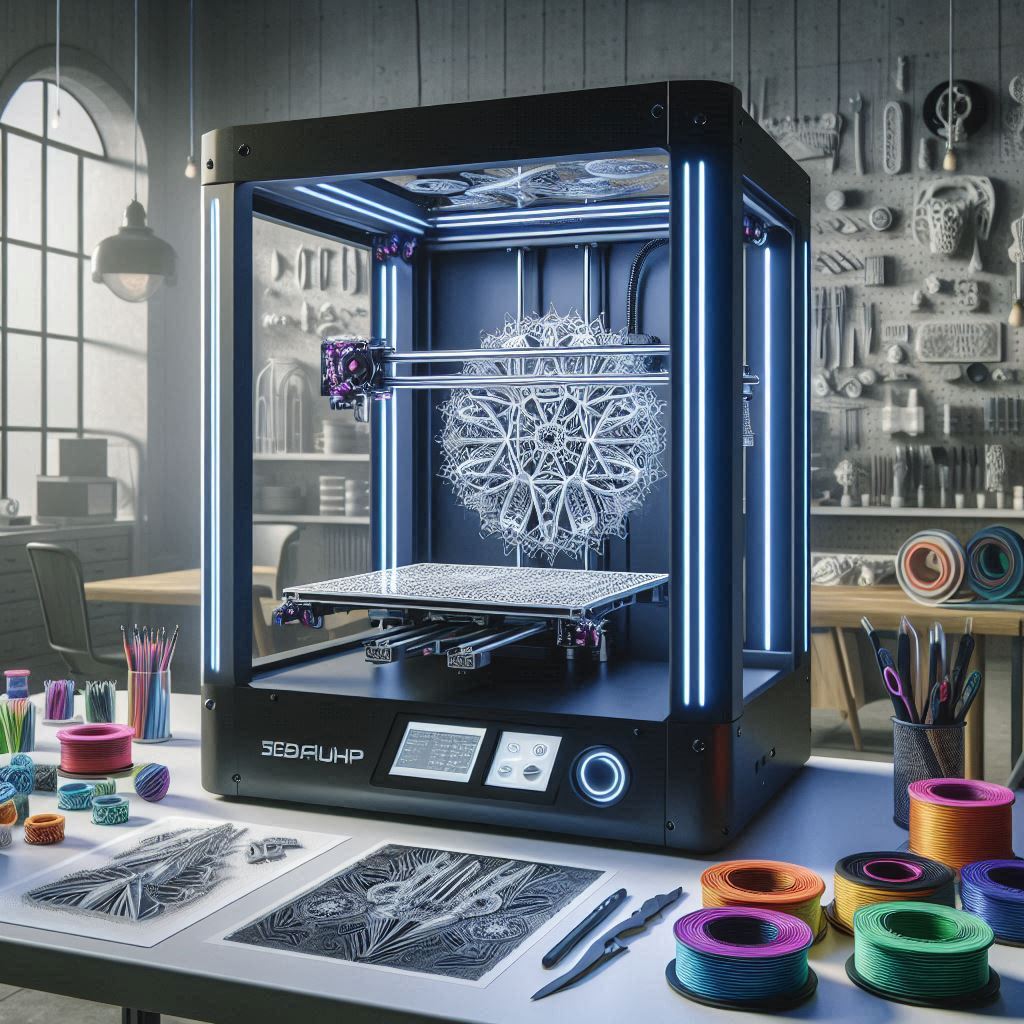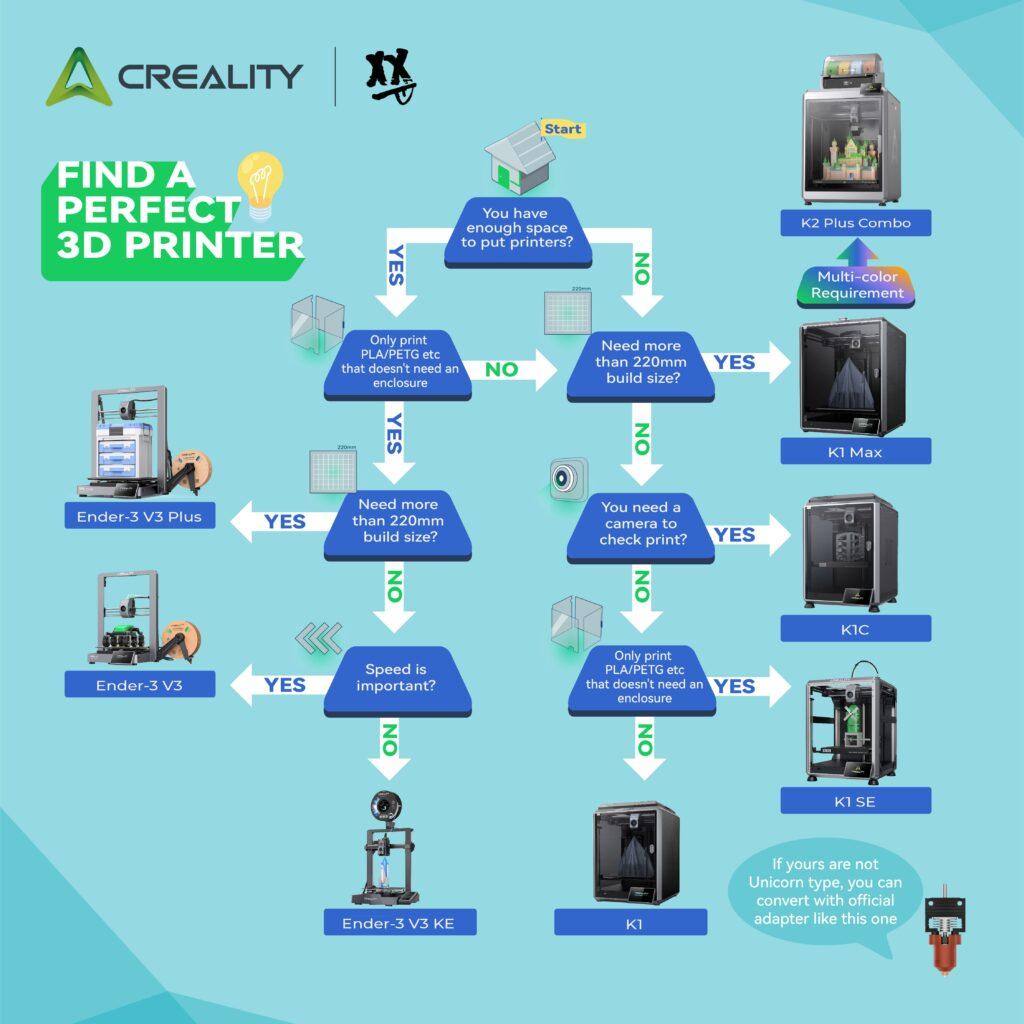
Dive into the exciting world of desktop 3D printing! Discover how this accessible technology is sparking creativity, revolutionizing industries, and contributing to a more sustainable future. Learn the basics, explore amazing applications, and see what the future holds for this transformative innovation.
Imagine a world where you can create almost anything you want, right on your desk. It sounds like something out of a science fiction movie, doesn’t it? But guess what? That world is here, and it’s all thanks to the amazing rise of desktop 3D printing. This isn’t just some cool new gadget; it’s a game-changing technology that’s putting the power of creation into the hands of everyday people, small businesses, schools, and artists. We’re in the middle of a real desktop 3D printing revolution, and it’s changing our world in exciting ways.
The Desktop 3D Printing Renaissance
Let’s take a trip back in time for a moment. Not too long ago, 3D printing was something you only saw in big factories or high-tech labs. These giant machines, which could build three-dimensional objects from digital designs, were super expensive and complicated. They were out of reach for almost everyone. But things have changed a lot! We’ve seen an incredible rise in desktop 3D printers – machines that are smaller, cheaper, and much easier to use. Now, they can sit right on your desk, ready to make your ideas come to life.
You might be wondering, “Why now? Why is this technology taking off so much?” Well, it’s because of a few things coming together. First, there have been huge advances in technology. The parts that make up 3D printers have gotten better and cheaper to make. Also, the software that controls these machines is now much easier to use. Second, affordability has made a big difference. In the past, a 3D printer could cost many thousands of dollars. Now, you can get a good one for just a few hundred dollars. This means more people can afford them. And third, accessibility isn’t just about the price. It’s also about how easy these machines are to use. You don’t need to be a rocket scientist to operate a modern desktop 3D printer. There are lots of helpful resources online, and the software is designed to be user-friendly.
All of this has led to something really special: the democratization of creativity and innovation. Desktop 3D printers aren’t just for big companies anymore. They’re giving regular people the tools to become creators, inventors, and even small-scale manufacturers, all from their own homes, workshops, and classrooms. They’re breaking down old barriers and making it possible for anyone with a good idea and a bit of curiosity to turn their dreams into real, physical objects. This is more than just a cool new technology; it’s a big shift in how we think about making things, and it’s inspiring a whole new wave of creativity and problem-solving.
Understanding the Basics
Before we dive into all the amazing things you can do with desktop 3D printing, let’s get a handle on how it actually works. Just like there are different kinds of regular printers (like inkjet and laser printers), there are also different types of desktop 3D printers. Each type has its own way of building objects, layer by layer.
The most common type is called Fused Deposition Modeling (FDM). To understand FDM, imagine a very precise, heated glue gun that can move in three dimensions. This “gun” squirts out thin strands of melted plastic, and these strands are laid down, one on top of the other, to build the object. FDM printers are popular because they’re relatively affordable, easy to use, and can work with many different types of materials.
Another important type is Stereolithography (SLA). Instead of plastic strands, SLA printers use a special liquid resin. This resin hardens when it’s hit with ultraviolet (UV) light. A UV laser or projector shines this light onto the resin, hardening each layer of the object as it goes. SLA printers are renowned for producing highly detailed and smooth objects, making them ideal for applications such as jewelry making, dental models, and intricate prototypes. While they tend to be more expensive than FDM printers and require a bit more care when handling the resin, the quality they produce is often worth it for those specific uses.
Besides FDM and SLA, other technologies include Selective Laser Sintering (SLS) and Digital Light Processing (DLP). However, these are less common in the world of typical desktop 3D printing because they are more expensive and complex.
Now, let’s talk about what these printers use to “print” with: common materials. For FDM printers, the “ink” comes in the form of filaments, which are like spools of plastic thread. PLA (Polylactic Acid) is a very popular filament. It’s made from materials like cornstarch, making it biodegradable in industrial composting facilities. It’s also easy to print with and comes in a huge variety of colors. PLA is a great choice for beginners and for general-purpose printing.
ABS (Acrylonitrile Butadiene Styrene) is another common filament. It is known for being strong and durable, so it is often used in making parts that require toughness. However, ABS can be a bit trickier to print with than PLA. It frequently needs a heated print bed to prevent warping (bending).
However, the world of 3D printing materials is continually evolving. Now, we have flexible filaments (like TPU), filaments filled with tiny wood particles (giving prints a wood-like look and feel), and even filaments containing metal powder (which can be processed to create a metallic appearance). For SLA printers, there’s a wide range of resins available, each designed for specific purposes, such as high detail, flexibility, or even use in medical applications. Some advanced desktop printers can even handle multi-material capabilities, allowing you to print objects with different colors or material properties in the same print job. This opens up a whole new level of creative possibilities.
Finally, let’s go through the 3D printing workflow step by step. There are usually three main stages:
- Designing: This is where you bring your idea to life in the digital world. You can either design your own 3D model using special software called Computer-Aided Design (CAD) software, or you can download designs that other people have already created from online libraries. There are numerous CAD software options, ranging from easy-to-learn programs for beginners to powerful tools utilized by professionals. Some are even free!
- Slicing: Once you have a 3D model (usually in a format like STL or OBJ), you need to prepare it for the printer using slicer software. This software takes your 3D model and cuts it into many thin, horizontal layers – the same layers that the printer will build. The slicer also allows you to adjust important settings, such as layer height (the thickness of each layer), infill density (the solidity of the object’s interior), print speed, and whether support structures (temporary parts that support overhanging sections of your design) are needed.
- Printing: This is where the magic happens! You send the sliced file to your 3D printer (usually via a USB drive, SD card, or Wi-Fi). The printer reads the instructions and starts building your object, layer by layer, either by squeezing out melted filament (in FDM) or by hardening resin (in SLA). The time it takes to print can vary significantly, depending on the size and complexity of the object. It could take anywhere from a few minutes to many hours.
Transformative Applications of Desktop 3D Printing
Now that we know how desktop 3D printing works, let’s explore some of the amazing ways it’s being used. This technology isn’t just a cool toy; it’s a powerful tool that’s changing many different parts of our lives.
One of the biggest changes is in prototyping and product development. In the past, creating prototypes (early versions of a product) could take a considerable amount of time and incur substantial costs. Often, companies had to hire special workshops to create them. Desktop 3D printing has made this process significantly faster and more cost-effective. Now, designers and engineers can quickly print out their ideas and see them in physical form. This allows them to test, improve, and refine their designs much more rapidly. Imagine an inventor working on a new gadget. They can print out a prototype, test it, make changes to the design on their computer, and print out a new version the next day. This speed and efficiency are revolutionizing the design and market introduction of products.
Besides its use in professional settings, desktop 3D printing is also fueling artistic endeavors. Artists and designers are using these machines to create things that were simply impossible before. Sculptors can create complex and intricate forms, fashion designers can make unique and detailed clothing pieces, and jewelry makers can produce custom designs with incredible precision. The ability to turn digital designs into physical objects opens up a whole new world of artistic expression, allowing for the creation of truly one-of-a-kind pieces.
On a more personal level, desktop 3D printing is empowering personal manufacturing. Do you need a replacement part for something that’s broken? Can’t find the exact tool you need for a specific project? With a 3D printer, you can often design and print these items yourself. From simple fixes around the house, like a new doorknob, to specialized tools for hobbies and DIY projects, the possibilities are endless. This ability to create custom solutions on demand reduces our reliance on mass-produced goods, giving us a greater sense of self-sufficiency.
One of the most inspiring applications is in educational uses. Desktop 3D printers are becoming essential tools in schools and universities. They offer a hands-on approach for students to learn about design, engineering, math, and even subjects such as history and art. For example, a history class could print out models of ancient artifacts, or an engineering class could design and build model bridges. This type of active learning enables students to engage with the material, foster their creativity, and enhance their problem-solving skills. It inspires the next generation of inventors and engineers by making learning more interactive and enjoyable.

The Role of Sustainability in Desktop 3D Printing
As we become more aware of the need to protect our environment, the role of sustainability in desktop 3D printing is becoming increasingly important. While the process of melting and extruding plastic might seem like it’s not very eco-friendly, there are actually several ways in which desktop 3D printing can contribute to a more sustainable future.
One important aspect is the development of eco-friendly filaments and materials. While traditional plastics like ABS are derived from petroleum, there’s a growing movement towards using materials made from renewable resources. We talked about PLA earlier, which is biodegradable under industrial composting conditions. But researchers are also working on new bioplastics made from things like cornstarch, sugarcane, and even algae. These materials offer a more sustainable alternative to traditional plastics and can help reduce our reliance on fossil fuels.
Another way desktop 3D printing promotes sustainability is through local manufacturing. Instead of relying on complex global supply chains where products are made in one country and shipped to another, 3D printing allows individuals and small businesses to produce goods on demand, right where they’re needed. This reduces waste and transportation emissions significantly. Think about it: instead of a product traveling thousands of miles on a ship or truck, it can be printed locally, reducing the carbon footprint and the amount of packaging required.
Looking ahead, the future of sustainable 3D printing lies in bioplastics and recycling. Scientists are working to create more durable and versatile bioplastics that can be used for a wider range of applications. There’s also a big push to develop better ways to recycle 3D printed waste. The goal is to create a “closed-loop” system where old 3D printed objects can be broken down and turned back into new filament, minimizing waste and conserving resources.
Common Challenges and How to Overcome Them
Like any technology, desktop 3D printing has its share of common challenges. But don’t worry! With a little know-how and some troubleshooting, most of these issues can be solved.
One frequent problem is warping, which is when the corners of a print lift up from the build plate during printing. This often happens because of differences in temperature between the hot plastic and the cooler build plate. To fix this, make sure your build plate is level and heated (if your printer has a heated bed). You can also use special adhesives like blue painter’s tape or a glue stick to help the print stick to the plate. Adjusting the printing temperature can also help.
Another common issue is under-extrusion, where the printer doesn’t extrude enough filament, leading to gaps and weak spots in the print. This can be caused by a clogged nozzle, incorrect settings in your slicing software, or problems with the extruder mechanism itself. Cleaning your nozzle, double-checking your filament diameter settings, and making sure your extruder is working properly can usually solve this problem.
Layer adhesion, or the lack of it, is another challenge. This is when the layers of a print don’t stick together well, resulting in a weak and fragile object. This can be caused by incorrect temperature settings, layer height settings, or a poorly leveled bed. Adjusting these settings and ensuring your build plate is clean and level can improve layer adhesion.
Another thing to consider is balancing cost and quality. While you can find very affordable 3D printers these days, they might not always produce the same high-quality results as more expensive models. Similarly, cheaper filaments might not be as consistent or reliable as higher-quality ones. It’s important to do your research and understand the trade-offs between price and performance to find the right printer and materials for your needs and budget.
Finally, making 3D printing even more user-friendly is an ongoing process. While the technology has come a long way, there’s still a bit of a learning curve. Simplifying the software, providing better instructions and tutorials, and developing more automated features will help make 3D printing accessible to even more people.
The Future of Desktop 3D Printing
The world of desktop 3D printing is constantly evolving, and there are some very exciting emerging trends that will shape its future. One of these is the integration of AI (Artificial Intelligence) into 3D printing. Imagine software that can automatically optimize print settings for you, or printers that can detect and correct errors on their own. AI has the potential to make 3D printing much easier, more reliable, and more efficient.
We’re also seeing the development of smart printers that are equipped with sensors and wireless connectivity. These printers can monitor their own performance, be controlled remotely through smartphone apps, and even automatically order more filament when you’re running low. This increased automation and connectivity will make 3D printing more convenient and seamless.
Multi-material innovations are also advancing rapidly. More and more desktop printers are now capable of printing with multiple filaments at the same time, allowing for the creation of objects with different colors, textures, and even functional properties in a single print job. This opens up a world of possibilities for creating complex and sophisticated objects.
Looking ahead, the predictions for affordability and accessibility in the next decade are very promising. As the technology continues to improve and production increases, we can expect the cost of desktop 3D printers to keep coming down. It’s not hard to imagine a future where 3D printers are as common in homes and offices as regular printers are today.
It’s also exciting to think about how desktop 3D printing will reshape industries. We’re already seeing it being used to create everything from custom medical implants to personalized consumer goods. As the technology becomes more advanced and new materials are developed, 3D printing has the potential to disrupt traditional manufacturing and create entirely new industries.
Why Desktop 3D Printing Matters
In conclusion, the desktop 3D printing revolution is much more than just a passing fad. It’s a fundamental shift in how we create and interact with the world around us. This technology is empowering individuals, driving innovation, fostering creativity, enabling personal manufacturing, and revolutionizing education.
Moreover, the growing emphasis on sustainability in the 3D printing world, with the development of eco-friendly materials and the promotion of local production, highlights its potential to contribute to a more environmentally responsible future. While there are still challenges to overcome, the ongoing advancements in technology and the increasing user-friendliness of desktop 3D printers are paving the way for widespread adoption and transformative applications.
So, what should you do? My advice is to explore, innovate, and make meaningful contributions. Whether you’re an aspiring inventor, a creative artist, a curious student, or simply someone who loves to tinker, now is the perfect time to dive into the world of desktop 3D printing. Experiment with designs, push the boundaries of what’s possible, and think about how this technology can help you bring your ideas to life. By embracing this revolution, we can all contribute to creating a future where creativity is democratized, innovation is accelerated, and manufacturing is more sustainable. The power to create is now within our reach – let’s use it to build a better world.


